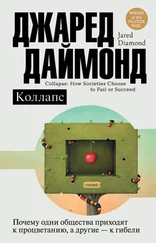За конкретни болести вж. Stephen Morse, ed., Emerging Viruses (New York: Oxford Univ. Press, 1993), където цели глави са посветени на „новите“ вирусни заболявания на човечеството; същото важи и за Mary Wilson et al., eds., Disease in Evolution , Annals of the New York Academy of Sciences, vol. 740 (New York, 1995). За бубонната чума вж. Colin McEvedy, „Bubonic plague“, Scientific American 258(2):118-23 (1988). За холерата — Norman Longmate, King Cholera (London: Hamish Hamilton, 1966). За инфлуенцата — Edwin Kilbourne, Influenza (New York: Plenum, 1987) и Robert Webster et al., „Evolution and ecology of influenza A viruses“, Microbiological Rev. 56:152-79 (1992). За лаймската болест — Alan Barbour and Durland Fish, „The biological and social phenomenon of Lyme disease“, Science 260:1610-16 (1993) и Allan Steere, „Lyme disease: A growing threat to urban populations“, Proceedings of the National Academy of Sciences 91:2378-83 (1994).
За еволюционните връзки на човешките маларични паразити — вж. Thomas McCutchan et al., „Evolutionary relatedness of Plasmodium species as determined by the structure of DNA“, Science 225:808-11 (1984) и A. P. Waters et al., „Plasmodium falciparum appears to have arisen as a result of lateral transfer between avian and human hosts“, Proceedings of the National Academy of Sciences 88:3140-44 (1991). За вируса на дребната шарка — Е. Norrby et al., „Is rinderpest virus the archevirus of the Morbillivirus genus?“ Intervirology 23:228-32 (1985) и Keith Murray et al., „А morbillivirus that caused fatal disease in horses and humans“, Science 268:94-97 (1995). За коклюша, или магарешката кашлица — R. Gross et al., „Genetics of pertussis toxin“, Molecular Microbiology 3:119-24 (1989). За едрата шарка — Donald Hopkins, Princes and Peasants: Smallpox in History (Chicago: Univ. of Chicago Press, 1983); F. Vogel and M. R. Chakravartti, „ABO blood groups and smallpox in a rural population of West Bengal and Bihar (India)“, Human Genetics 3:166-80 (1966) и моята статия „A pox upon our genes“, Natural History 99(2):26-30 (1990). За т.нар. маймунска шарка, сродна с едрата — Zdenek Jezek and Frank Fenner, Human Monkeypox (Basel: Karger, 1988). За сифилиса — Claude Quetel, History of Syphilis (Baltimore: Johns Hopkins Univ. Press, 1990). За туберкулозата — Guy Youmans, Tuberculosis (Philadelphia: Saunders, 1979). За тезата, че туберкулозата е присъствала в двете Америки още преди идването на Колумб — най-вече Wilmar Salo et al., „Identification of Mycobacterium tuberculosis DNA in a pre-Columbian Peruvian mummy“, Proc. of the National Academy of Sciences 91:2091-94 (1994); противоположната теза е развита в: William Stead et al., „When did Mycobacterium tuberculosis infection first occur in the New World?“ American Journal of Respiratory Critical Care Medicine 151:1267-68(1995).
Глава XII
Ето и литературата, посветена на писмеността изобщо и на отделни писмени системи, която съм ползвал: David Diringer, Writing (London: Thames and Hudson, 1982); I. J. Gelb, A Study of Writing , 2 nded. (Chicago; Univ. of Chicago Press, 1963); Geoffrey Sampson, Writing Systems (Stanford: Stanford Univ. Press, 1985); John DeFrancis, Visible Speech (Honolulu: Univ. of Hawaii Press, 1989); Wayne Senner, ed., The Origins of Writing (Lincoln: Univ. of Nebraska Press, 1991) и J. T. Hooker, ed., Reading the Past (London: British Museum Press, 1990). Едно богато илюстровано изследване на по-значимите писмени системи е: David Diringer, The Alphabet , 3 rded., 2 vols. (London: Hutch-inson, 1968). Jack Goody, The Domestication of the Savage Mind (Cambridge: Cambridge Univ. Press, 1977) и Robert Logan, The Alphabet Effect (New York: Morrow, 1986) разглеждат значението на грамотността като цяло и в частност на азбуката. Приложението на най-ранните системи е разгледано в: Nicholas Postgate et al., „The evidence for early writing: Utilitarian or ceremonial?“ Antiquity 69:459-80 (1995).
Дешифрирането на някои неразчетени досега писмености е описано увлекателно в: Maurice Pope, The Story of Decipherment (London: Thames and Hudson, 1975), Michael Coc, Breaking the Maya Code (New York: Thames and Hudson, 1992), John Chadwick, The Decipherment of Linear B (Cambridge: Cambridge Univ. Press, 1992), Yves Duhoux, Thomas Palaima, and John Bennet, eds., Problems in Decipherment (Louvain-la-Neuve: Peeters, 1989) и John Justeson and Terrence Kaufman, „А decipherment of epi-Olmec hieroglyphic writing“, Science 259:1703-11 (1993).
Двутомното изследване на Denise Schmandt-Besserat, Before Writing (Austin: Univ. of Texas Press, 1992) представя една спорна възстановка на генезиса на шумерското писмо. В Hans Nissen et al., eds., Archaic Bookkeeping (Chicago: Univ. of Chicago Press, 1994) са описани глинените таблички от Месопотамия, на които са представени най-ранните форми на клинописните знаци. В Joseph Naveh, Early History of the Alphabet (Leiden: Brill, 1982) са проследени отделните появи на азбучното писмо в Източното Средиземноморие. Угаритското писмо е разгледано в: Gernot Windfuhr, „The cuneiform signs of Ugarit“ Journal of Near Eastern Studies 29:48-51 (1970). В Joyce Marcus, Mesoamerican Writing Systems: Propaganda, Myth, and History in Four Ancient Civilizations (Princeton: Princeton Univ. Press, 1992) и Elizabeth Boone and Walter Mignolo, Writing without Words (Durham: Puke Univ. Press, 1994) е описано развитието и приложението на мезоамериканските писмени системи. За китайската писменост вж. William Boltz, The Origin and Early Development of the Chinese Writing System (New Haven: American Oriental Society, 1994), както и статията от същия автор „Early Chinese writing“, World Archaeology 17:420-36, (1986). И накрая бих препоръчал и едно изследване, еднакво занимателно за деца и възрастни, в което е описано как Секвоя е създал черокската сричкова азбука — Janet Klausner, Sequoyah’s Gift (New York: Harper Collins, 1993).
Глава XIII
Стандартната и най-подробна история на технологията е осемтомната A History of Technology , by Charles Singer et al. (Oxford: Clarendon Press, 1954–84). Подобни, но събрани в рамките на един том, са: Donald Cardwell, The Fontana History of Technology (London: Fontana Press, 1994), Arnold Pacey, Technology in World Civilization (Cambridge: MIT Press, 1990) и Trevor Williams, The History of Invention (New York: Facts on File, 1987). E. A. Buchanan, The Power of the Machine (London: Penguin Books, 1594), е една кратка история на технологията, фокусирана обаче върху периода след 1700 г. В Joel Mokyr, The Lever of Riches (New York: Oxford Univ. Press, 1990) е разгледан въпросът защо темпото на технологическото развитие е варирало във времето и пространството. Джордж Васала [George Basalla, The Evolution of Technology (Cambridge: Cambridge Univ. Press, 1988)] представя един еволюционистки възглед за технологическите промени. Евърет Роджърс [Everett Rogers, Diffusion of Innovations , 3 rded. (New York: Free Press, 1983)] разглежда съвременните изследвания върху предаваното и дифузията на изобретенията (вкл. и клавиатурата QWERTY). Дейвид Халоуей [David Holloway, Stalin and the Bomb (New Haven: Yale Univ. Press, 1994)] разнищва всички факти, свързани с механичното копиране, разпространяването на научни идеи (чрез шпионаж) и самостоятелните открития, довели в крайна сметка до създаването на съветската атомна бомба.
Читать дальше








